| 2021 E-NEWSLETTER | VOLUME 21, ISSUE 1 |
Circle of Hope
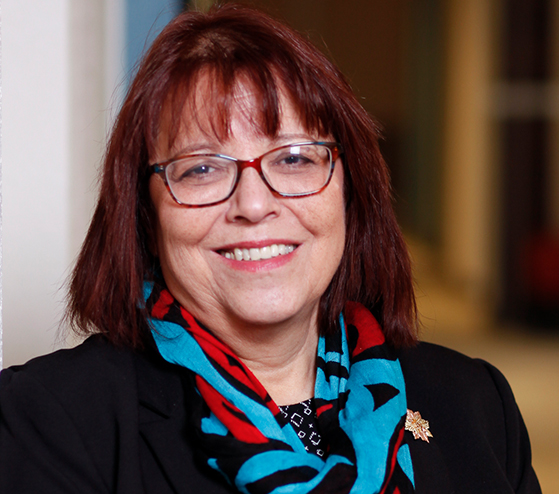 Our Students Give Me Hope
Our Students Give Me Hope
And today I need it – I write this as December is starting and I anticipate spending Christmas (just as I did Thanksgiving) without my family because of the surge in COVID-19 cases and deaths across our country, which have reached frightening new highs. This is especially true in Native communities and families, including mine. Still, I find myself clinging to the idea that the fear and sadness I’m feeling will bring something good. Despite a year that has seemed determined to ravage Native communities, I believe we will prevail.
There is no question Native communities have suffered enormous loss over the last 11 months. Inequities that have existed for generations went from something we had learned to live with (though working hard to overcome), to something that has stolen our cherished relatives and Elders from us at alarming rates. Through July of last year, the CDC reported that American Indian and Alaska Natives experienced COVID-19 at 3.5 times the rate of White Americans, and now at the end of the year, we are experiencing the highest mortality rate of any other group in the country.
My determination to hold onto hope sometimes feels as though it is being held by just a thread. Thankfully that thread is a powerful one – because it holds the hope and optimism of nearly 20,000 Native college students. Last fall, the College Fund received the second-highest number of scholarship applications in our 30-year history. And for those tribal colleges and universities that were able to provide additional support for things like debt forgiveness, reduced or free tuition, and even free housing, student enrollment increased by an average of 28%.
Tribal colleges made a swift shift to online courses and additional student resources; Native scholars enrolled for the first time or returned to school determined to pursue their degrees; the College Fund discovered new ways of supporting our students and communities; and all of it was possible because you care.
I see a new determination, and stronger focus on the path forward in our students. I see the unshakeable will they have to reclaim control over their own lives and communities, and how they connect that strength and control to a specific educational goal.
“Infusing our tribal councils, our boards of education, our state and federal governments with the voices and leadership of young Native Americans sets us on a new journey, one our ancestors dreamed of and fought for.”
Infusing our tribal councils, our boards of education, our state and federal governments with the voices and leadership of young Native Americans sets us on a new journey, one our ancestors dreamed of and fought for. With sincere determination to be good representatives of their people, leaders like President Killer have the potential to create real and lasting change, not just for their terms of service, but for generations to come. They are bringing to their roles new ideas, new beliefs, and new knowledge with which to create a better future. They are bringing to their roles the power of education.
I do not yet know what enrollment looks like for this spring, but I have no doubt that every single Native scholar who is completing their coursework using a hot spot in a parking lot, or reading through a textbook while their children are sleeping, or finishing a shift at work only to then finish their assignment at home will use the power of their educations to create change. It’s time for us to place our hope in the future they are building. It’s time for us to place our hope in education.
Pilamayayapi (thank you) for your support and friendship,
Cheryl
Q&A with College Fund Scholars Kenwa and Chandra
“What will your generation do to create stronger, sustainable tribal communities?”
Kenwa
Every generation has had its unique challenges, but I believe this generation has the potential to overcome many of the obstacles of the past and to create change that will last for generations to come. We are using our educations and our access to technology to better understand how to create stronger and more sustainable communities. We are also bridging the worlds we live in by maintaining a connection to our traditions and cultural understanding that have successfully guided our people since time immemorial.
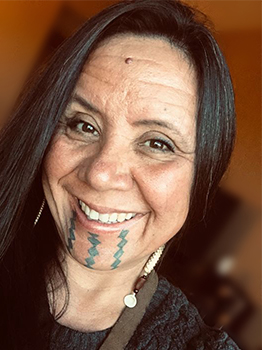
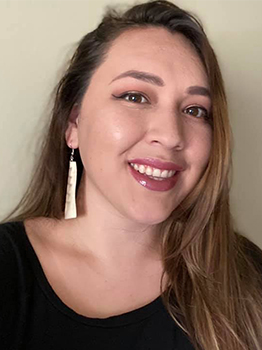
Chandra
My generation is doing many things to create stronger and sustainable tribal communities. I have classmates who are teachers, firefighters, police officers, advocates, counselors, artists, and more. Most are working in our tribal communities to make a difference in their respective professions and I have deep admiration for the work they do, as it inspires me to reach for success in my own field. My generation is showing our youth that we, as Indigenous people, are capable of achieving our dreams, reaching our goals, and we can make an impact in our tribal communities. Overall, sustainable tribal communities are created and maintained by those who are passionate about education, health, safety, and the well-being of the community.
“What are the biggest barriers in your community to going to and completing college?”
Kenwa
There are several barriers for my community when it comes to going to college. For one, it’s been really hard for us to accept Western education because of the history of boarding schools and forced Western education. Another barrier is distance, whether it’s the miles students need to travel or the moving away from homelands – distance is a very difficult barrier, considering our traditional family-oriented culture. I think that having a college closer to our homelands, and the resources and support we need for students to access college courses remotely, would really help with this barrier.
Chandra
One of the biggest barriers for my tribe going to school and getting a degree is the lack of support systems for finding and securing scholarships, finding housing, and money management. I don’t think those things are talked about enough and I feel like if I’d had that kind of support it would have helped me be more successful when I was younger. Having been fortunate enough to receive scholarships, including one from the American Indian College Fund, I’ve been really encouraging other people to apply. I let them know that there ARE people who want us to go to school so we can make an impact.
Alumni Profile
Sadie Red Wing and the Critical Importance of Native Representation
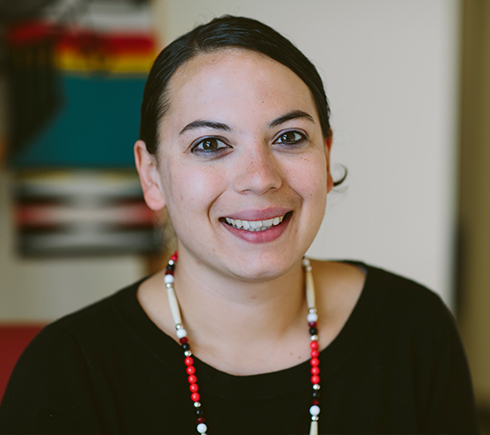
My name is Sadie Red Wing, and I am a citizen of the Spirit Lake Dakota Nation, a College Fund Scholarship recipient and Student Ambassador, and current College Fund employee.
I received my Bachelors of Fine Arts from the Institute of American Indian Arts in Santa Fe, New Mexico (2013), and my Master’s in Graphic Design at North Carolina State University (2016). I was awarded the NBC Universal Scholarship from the American Indian College Fund, which led me to becoming a student ambassador with the College Fund and now I am proud to be a College Fund staff member.
While attending North Carolina State University, I found myself immersed in a graduate cohort with mentors who shared no empathy or knowledge of issues relating to decolonization, decoloniality, repatriation, cultural appropriation, visual sovereignty, underrepresentation, or inequitable access to sustainable resources.
Unexpectedly, I received an invitation to present with design anthropologist, Elizabeth Dori Tunstall, on the topic of Respectful Design at the annual American Institute of Graphic Arts (AIGA) conference. Ms. Tunstall introduced this movement to address the lack of respect, diversity, and inclusiveness in design education. Her interest in my participation allowed me to share an Indigenous voice for students who experienced underrepresentation in graduate level studies.
Currently, Indigenous people do not dominate any profession relating to the field of design, nor do institutions retain Native American students who might seek these types of degrees. Once I recognized the insufficient retention of Native American students in mainstream art, design, and STEM focused institutes, I shifted my focus to advocating for inclusivity for Native Americans in these creative fields.
In April 2020, I returned to the American Indian College Fund as a Student Success Coach. In this position, I am fortunate to be immersed in an environment that allows me to learn greater advocacy skills for Indigenous students seeking higher education. I hope to build my experience in developing academic foundations and frameworks that reflect cultural competency for institutions, as well as increase Native American student success through resources provided by the College Fund.
Sadie Red Wing, MGD (Spirit Lake Dakota)
The Simons Family Legacy of Giving
Howard Simons was one of the great spirits and souls of American journalism and philanthropy, and through his generosity he was also a tremendous advocate for Native Americans.
As managing editor of The Washington Post, Mr. Simons was known as a journalistic traditionalist who prized aggressive reporting and was critical of what he considered to be a modern trend toward lighter, less serious newspapers.
After retiring, Mr. Simons started a foundation to support Native American journalists. His daughter, Anna Simons Jordan, in dissolving her late father’s estate, chose the College Fund to receive the remaining assets of that foundation, which totaled nearly $1,000,000. This is an enormous boost to Native students applying for scholarships.
Like the Simons family, you can leave a legacy that creates a brighter future for Native students and their families. Rally your community and start a fundraiser today – together we can create change! For questions or information, reach out to Kim at kwilliams@collegefund.org.
Statement from President Cheryl Crazy Bull
As a life-long Native educator, my entire career has been enriching Native people and communities through education so they can build their own futures and help build the future of this country. My role as an educator is to establish, protect and promote the democratic process we rely on, as Native people have done throughout history.
Native people have been an integral force in the development of our democratic government and society since its establishment.
Some examples of this include:
-
-
- America is founded on Native lands.
- Native governance systems served as the model for our Constitutional democracy.
- Native code talkers speaking our sacred Native languages saved democracy from the threat of fascism during World War II.
- Our young men and women serve in the military to protect this nation in greater numbers per capita than any other racial or ethnic group.
- Many years ago, our people traveled across this nation to the Capitol to sign treaties that are still enforced (though not always honored) today.
-
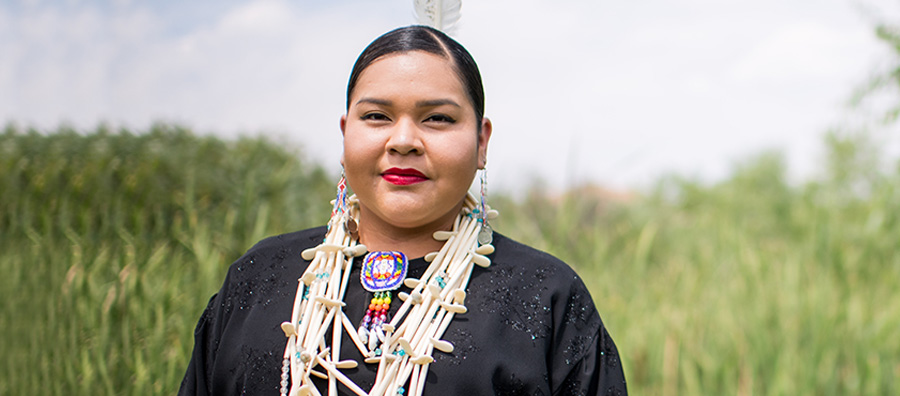
Despite all Indigenous people have sacrificed, despite all our ancestors and families have suffered, we believe in this country. And although we must continually fight to be full participants in this democracy, we do not shy away from the call to protect our rights as citizens.
Without an adequate education, we cannot be good citizens and what we’ve seen happen over the last several months will remain inevitable. Maintaining democracy, domestic peace, equity, and rule of law are impossible when citizens do not have access to the skills needed for discernment and good decision-making. A formal education provides people with those skills and teaches us how to be engaged citizens, how to discern lies from truth, science from unfounded theories, and facts from propaganda. Education is the foundation of a vibrant democracy.
As many of us are still processing the events at the Capitol building and subsequent fallout, I also know there will likely be more to come, which I find deeply troubling. As we seek a path of peace and prosperity please continue to support education, dialogue, and citizenship so that moving forward we can be and do better — as individuals, communities and as a nation.
Mitakuye Oyasin, we are all related.
In gratitude and strength,
Cheryl Crazy Bull
